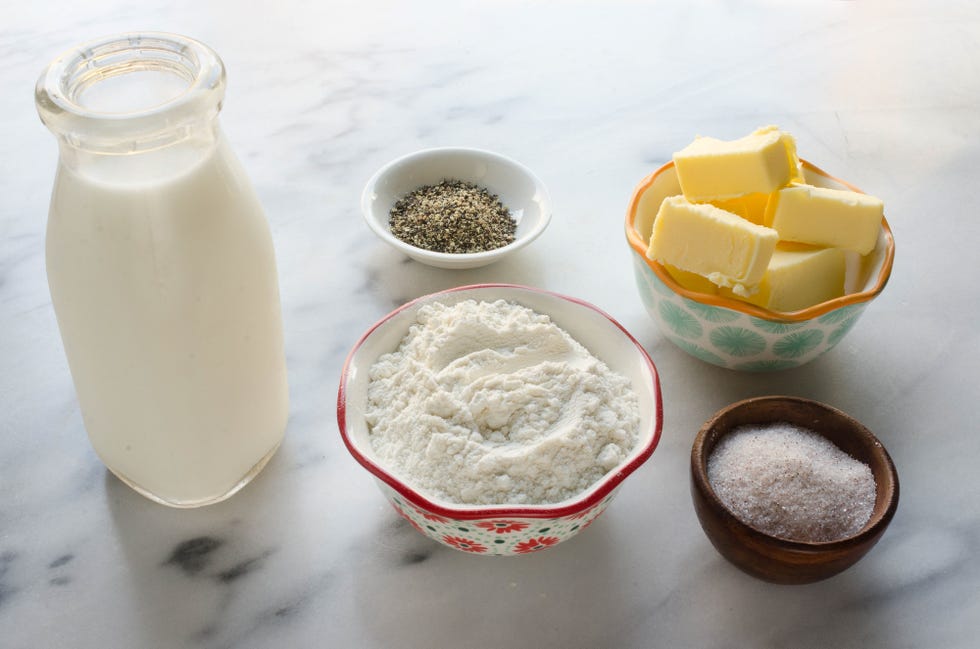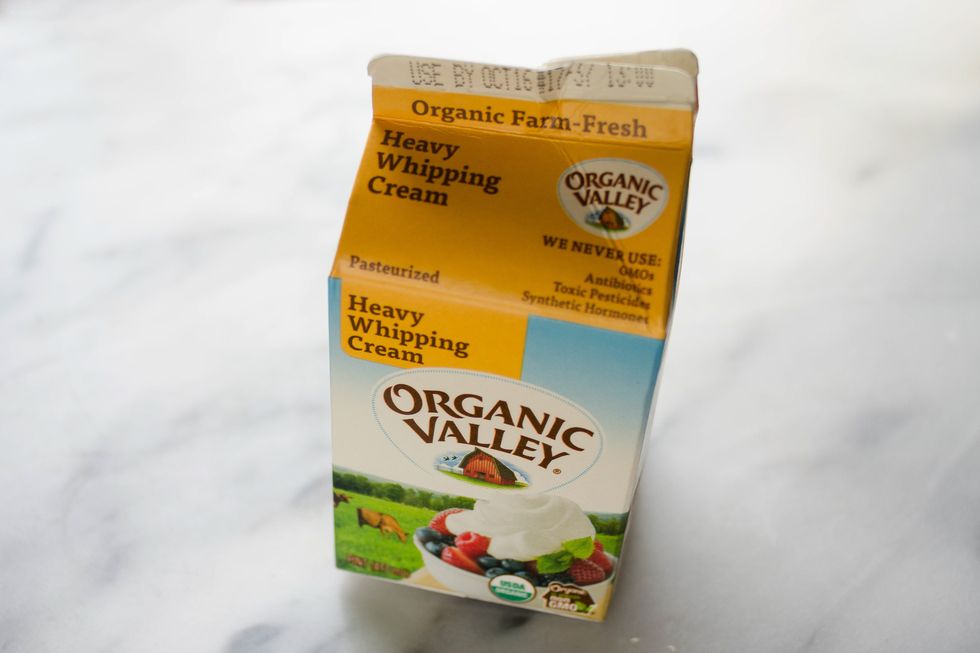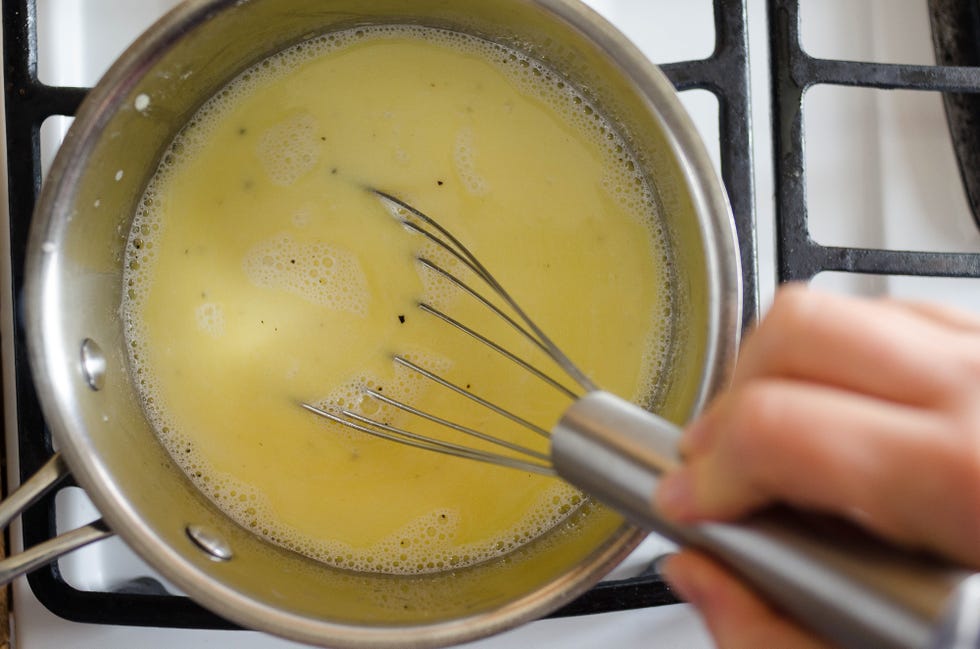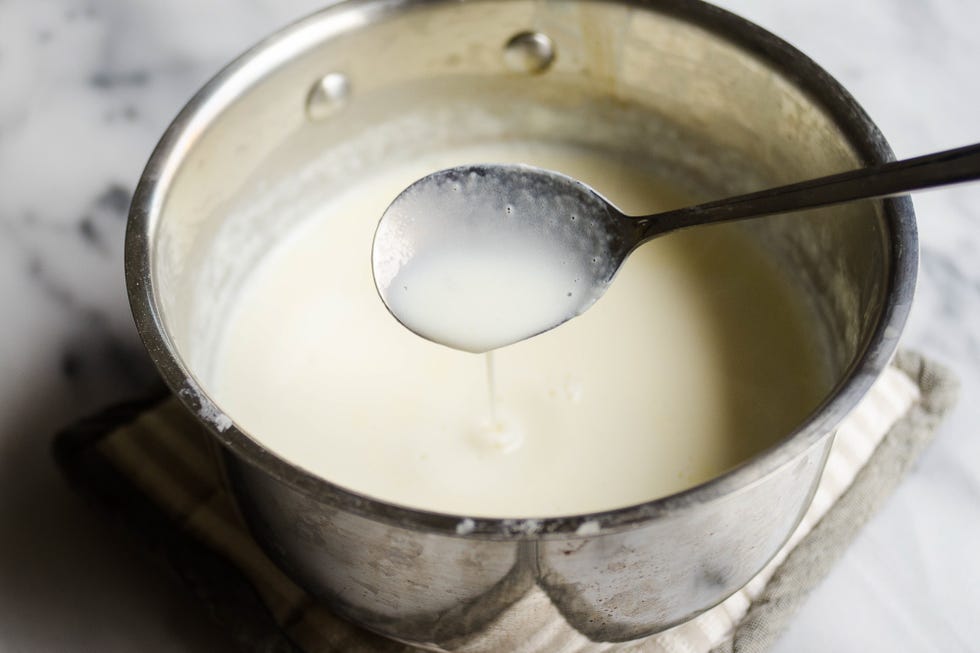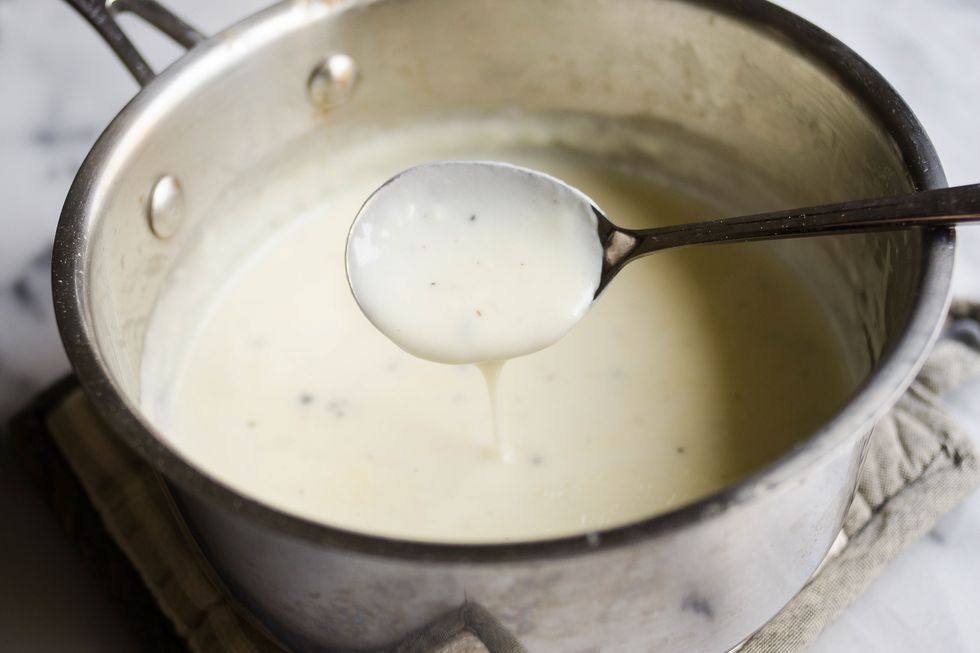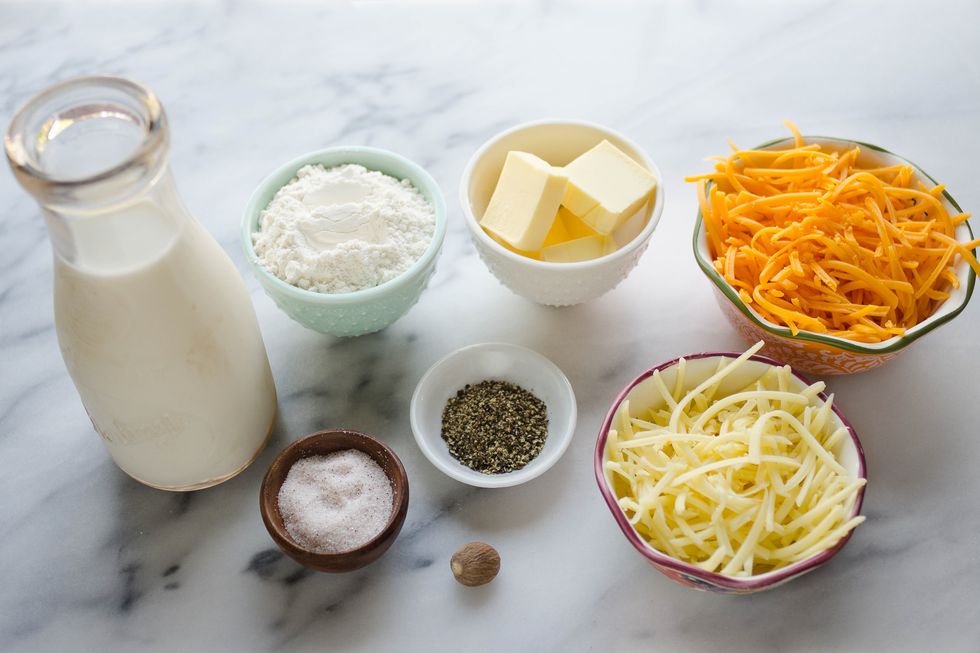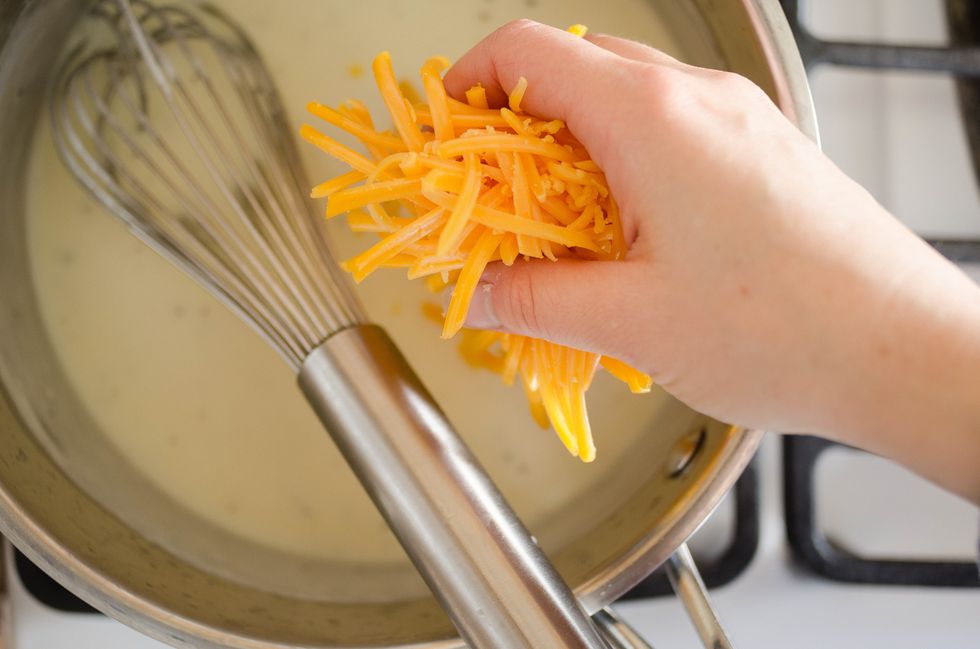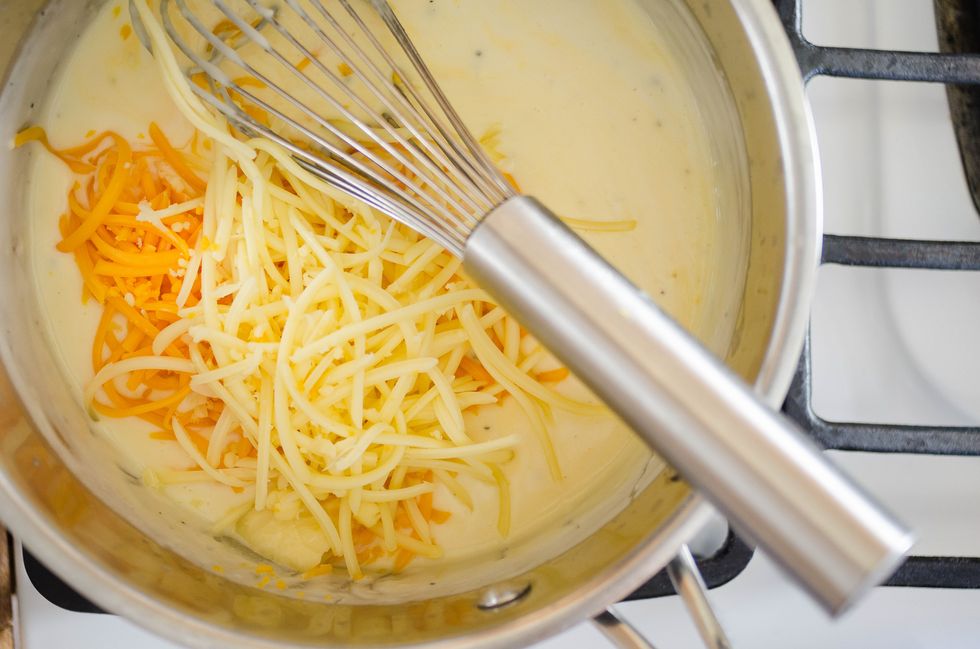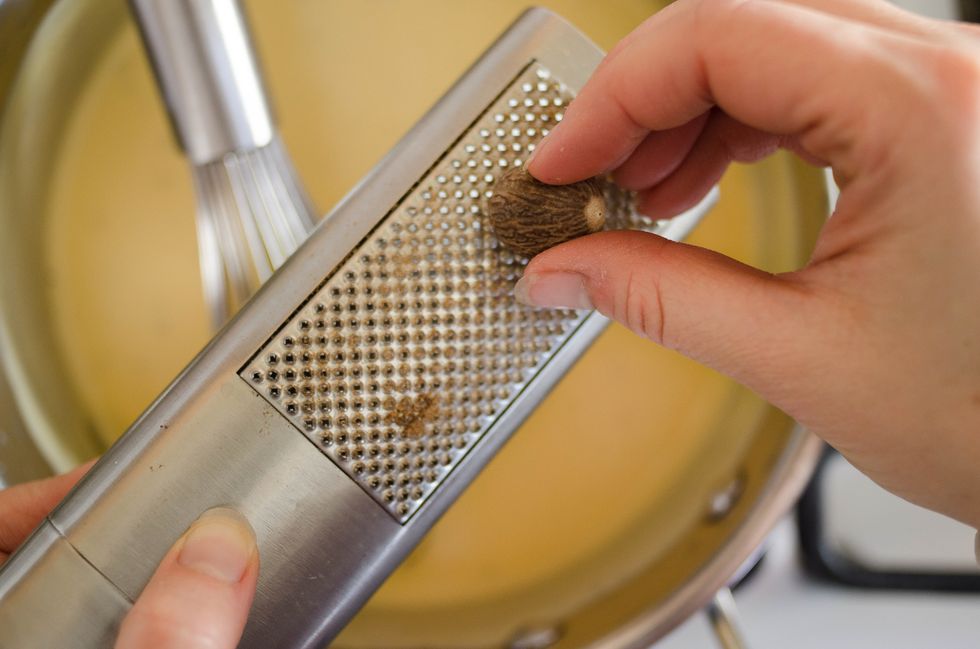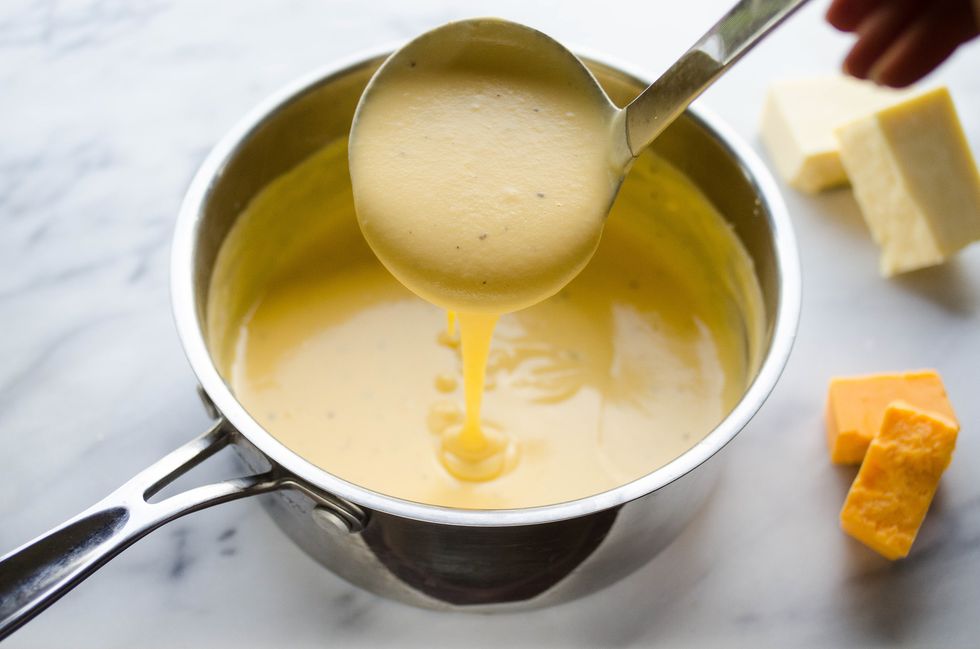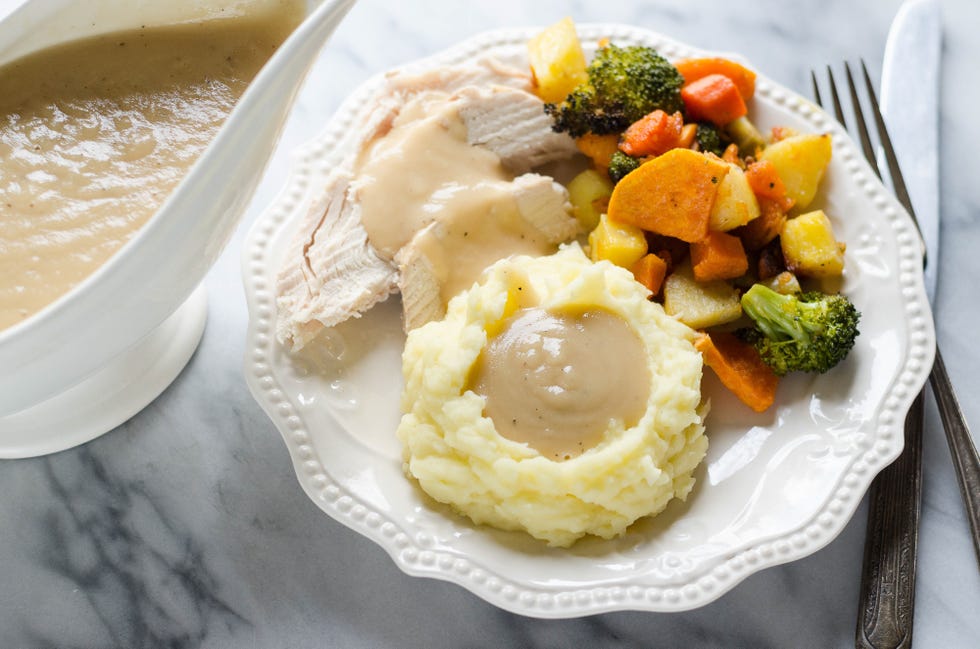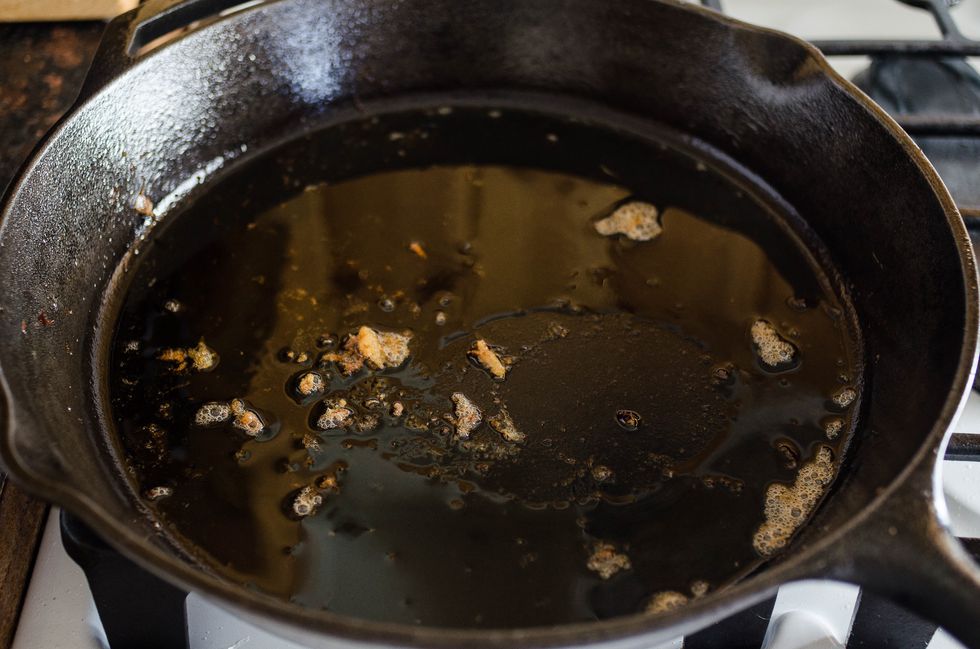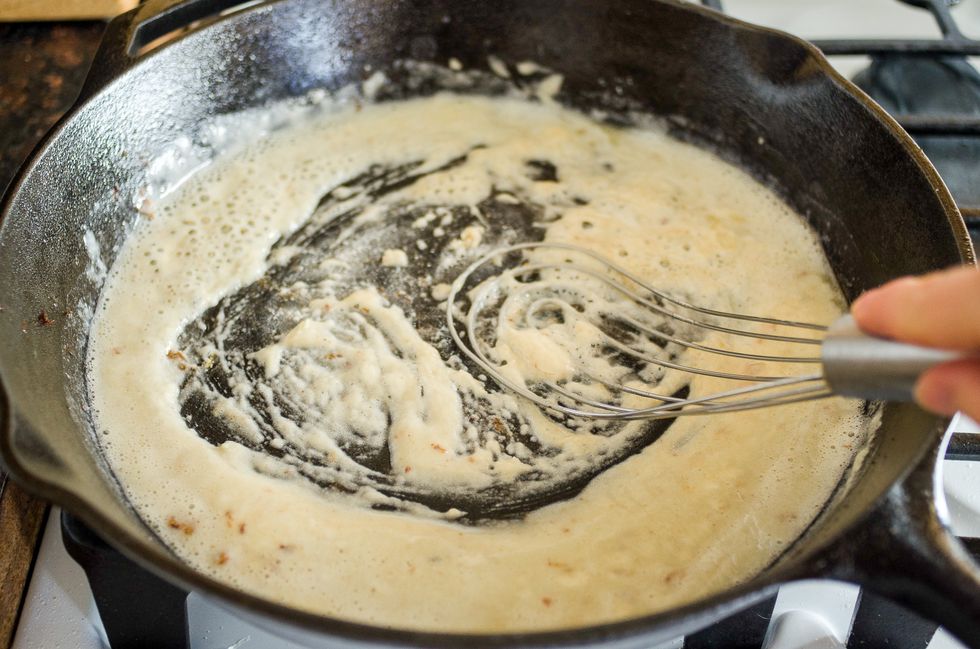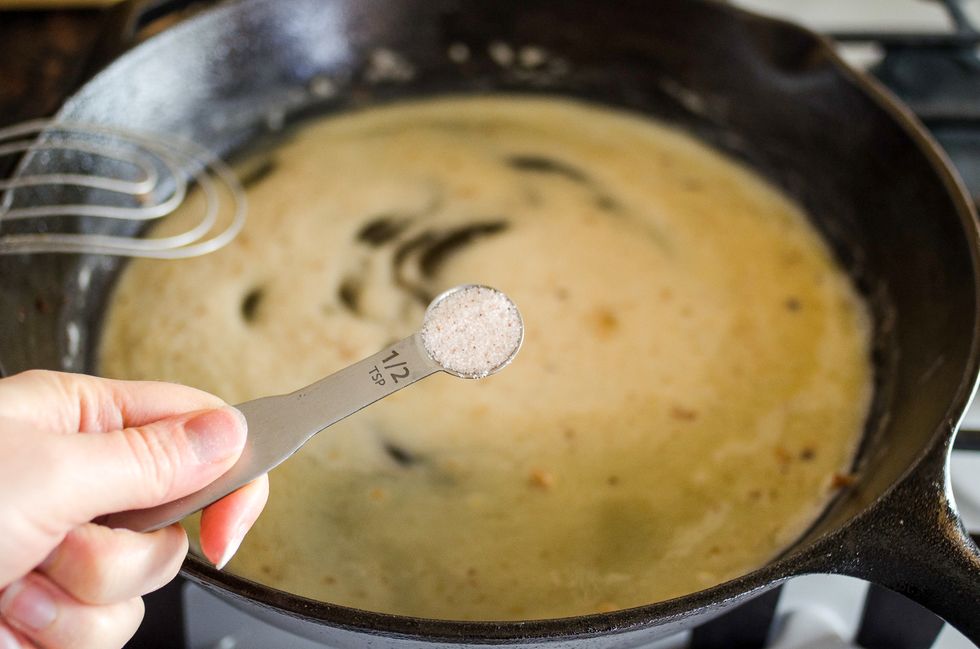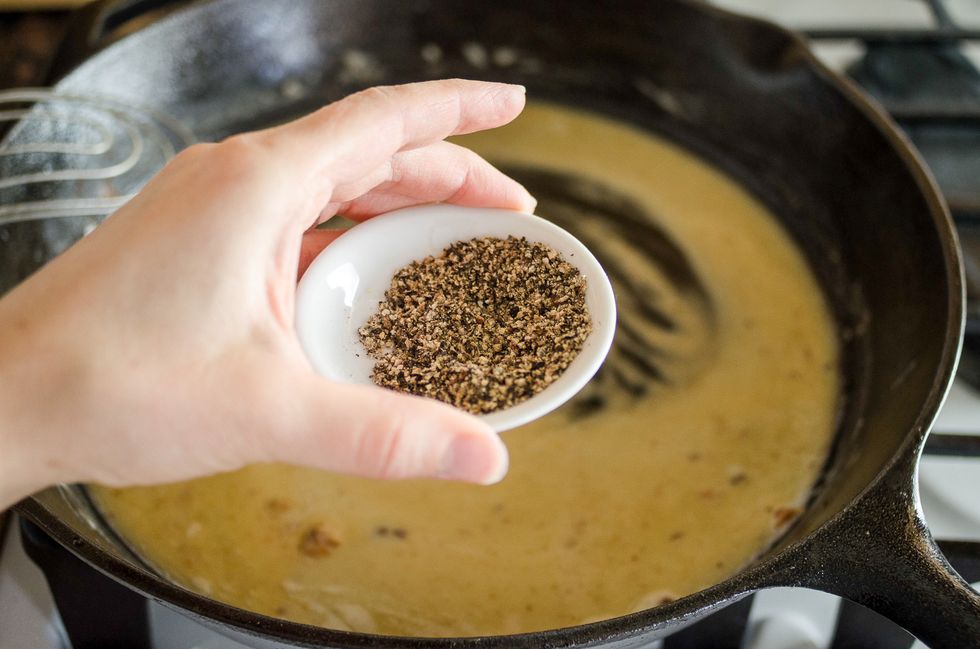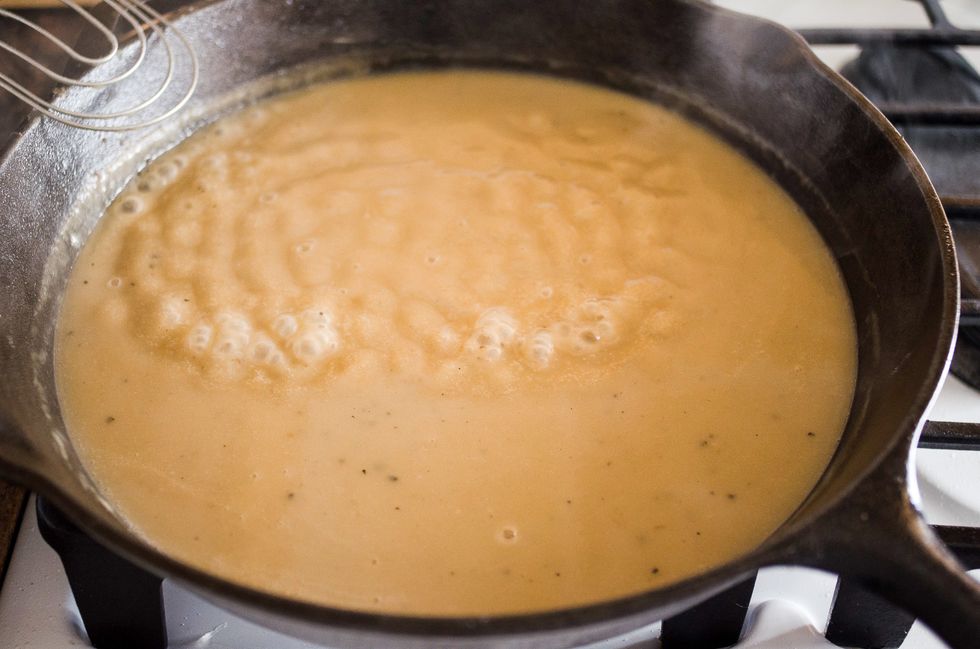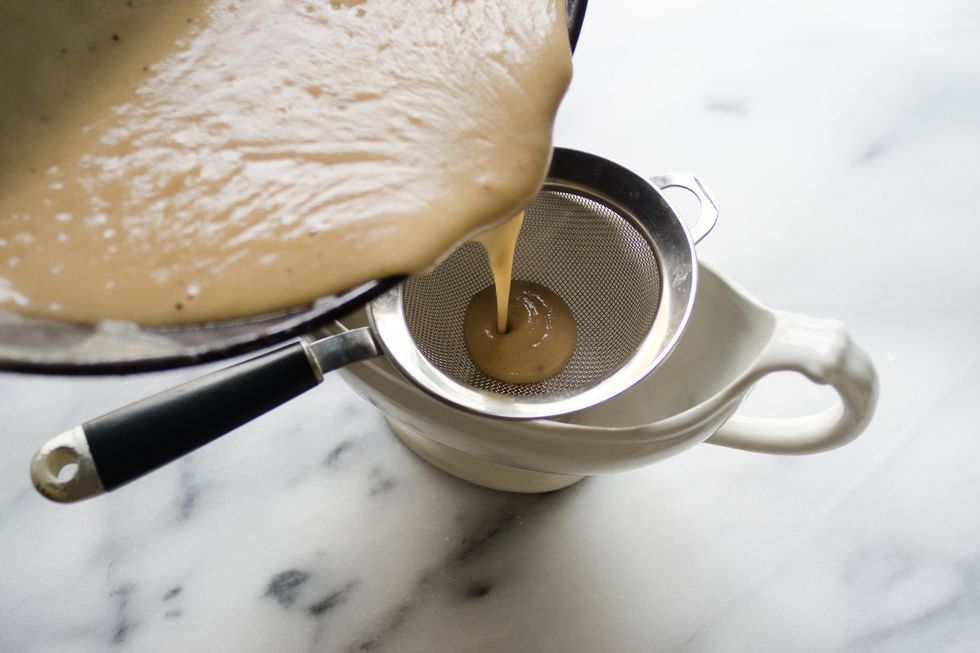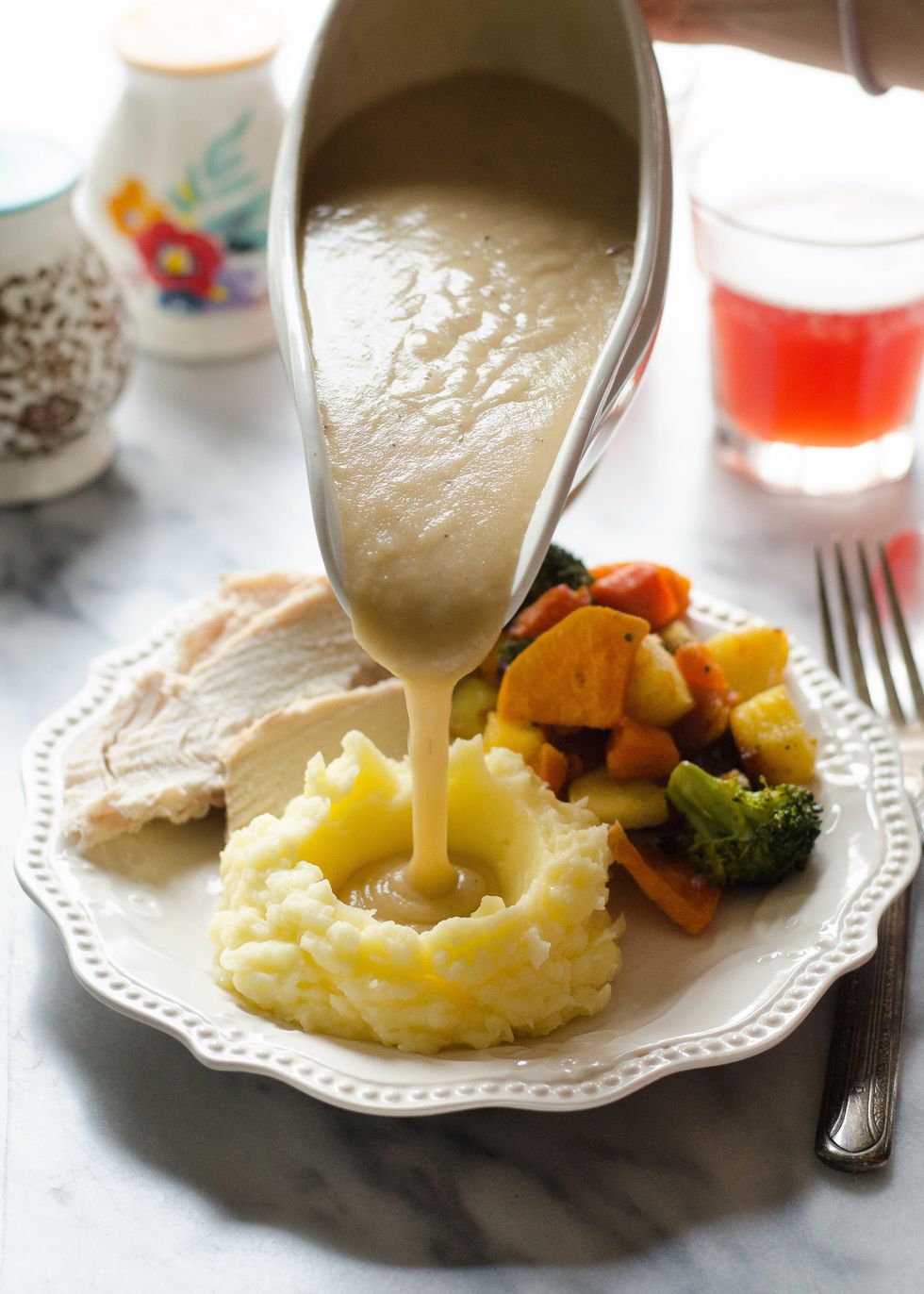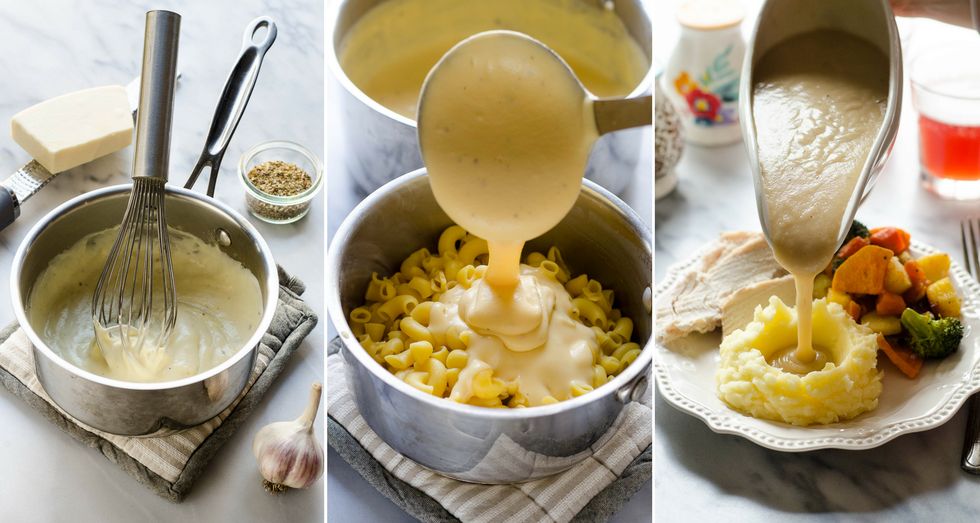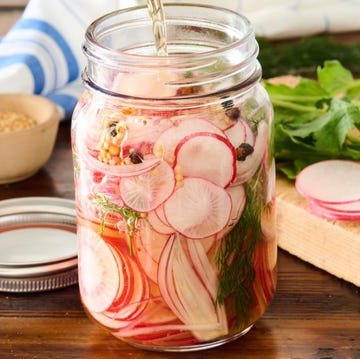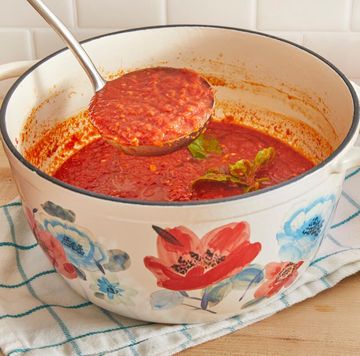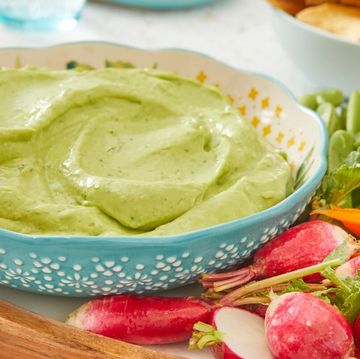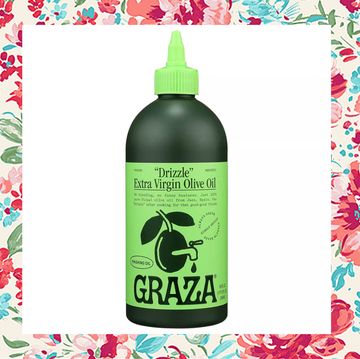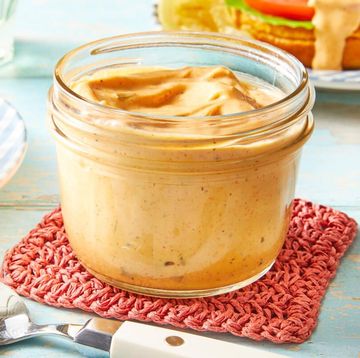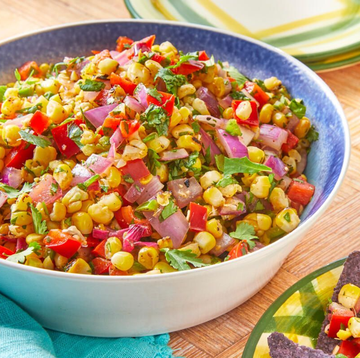Last week, we went over the basics of how to make a roux. Today I’d like to build off that and show you 3 sauces that I think every home cook should be able to make. They add a wonderful texture and flavor to a wide variety of dishes. And once you’ve made them a few times, you won’t even need a recipe!
1 - Béchamel or Basic White Sauce
A white sauce is made by adding milk, salt, and pepper to a roux. To make a true, authentic white sauce, you would use white pepper so the sauce remains completely white. But I’m not particularly fond of white pepper, so I use black instead.
You can also use cream for part of the liquid to make a richer sauce.
Start by making a white roux as described in my previous post. Add salt and pepper. For every one cup of milk, I like to start with 1/4 teaspoon salt.
Now add your milk.
Some advocate using warm milk, while others insist that using cold milk will ensure that you don’t get lumps. I find that I don’t get lumps when I use cold milk, and it saves time and dishes if you don’t heat it first.
I think the way you add the milk is more important than the temperature. Don’t add it all at once: stir in about 1/4 or 1/3 of the milk and whisk furiously. When everything is smooth and combined, gradually add more of the milk. Adding the milk gradually like this makes it easier to combine with the roux, and therefore it won’t be as likely to form lumps.
The amount of flour you use will, obviously, affect how thick your sauce is. This is what a sauce made with 1 tablespoon each of flour and butter per cup of milk looks like. Just barely thickened. This is good for thickening soups just a tad.
This is what a sauce made with 2 tablespoons each of butter and flour per cup of milk looks like.
This thickness is good for chicken pot pies, casserole fillings, etc.
And this is what a sauce made with 4 tablespoons (or 1/4 cup) each of flour and butter per cup of milk looks like.
I don’t recommend going much thicker than this. I like to use this thickness for a sauce to go on pizza. If you use a thin white sauce on pizza, it will make the crust soggy.
A béchamel sauce is the basis for other sauces, such as an American-style Alfredo sauce. You can cook some garlic in with the roux, add some dried or fresh Italian-style herbs (such as basil or oregano), and a grating of Parmesan. Boom. A quick-and-easy cheater Alfredo sauce.
2 - Mornay or Cheese Sauce
Building off a white sauce is a Mornay or cheese sauce. The only extra ingredients you need are cheese and nutmeg (which is actually optional).
The type of cheese you choose is important. You want a combination of a soft cheese that melts easily and a harder, more flavorful cheese. Here I used part Colby, part sharp cheddar. If you use too much cheddar, your sauce will be grainy. If you only use a soft, mild cheese, your sauce won’t have much flavor.
Start with a white sauce thickened with 2 1/2 tablespoons each of flour and butter per cup of milk. Use 3 ounces of shredded cheese per cup of milk.
I recommend using 2 parts soft cheese to 1 part hard cheese. Whisk it in gradually until completely smooth and melted.
You can add just a tiny bit of nutmeg to enhance the flavors. Don’t go overboard here: you don’t want your cheese sauce to taste like eggnog!
Ooooh … just look at that cheesy goodness!
You can add this sauce to cooked pasta for classic mac and cheese. I, of course, like to sprinkle a little extra cheese on top when I serve this.
3 - Gravy
Another sauce that every cook should be able to whip up at the drop of a hat is gravy. It takes a roast meal from boring to disarmingly delicious in minutes.
If you’ve ever struggled with lumpy gravy, I’ve got the recipe for you. It’s nigh unto impossible to mess up. I know there are different ways to make gravy, but this is how my mom makes it.
Ideally, you start with the cracklings and fat from the meat that you cooked. If you’re cooking meat with a skin (such as turkey or chicken), definitely brown it in an pan first before you put it in the oven.
If you don’t have any fat from your meat, you can substitute any oil. I highly recommend using an animal fat since it will impart the best flavor. Butter, lard, chicken fat, beef tallow, and bacon fat are all good choices. Just keep in mind what you want the finished flavor of your gravy to be.
Estimate or measure how much fat is in your pan, and add an equal amount of flour. So if you have 4 tablespoons of fat, put in 4 tablespoons of flour. You’re looking for the flour to absorb the oil. You don’t want the roux to be too thick or it will be difficult to stir in the liquid. And you don’t want the roux to be too thin either or your gravy will be oily. Somewhere in the middle is perfect.
Salt is a critical component of a gravy. An under-salted gravy is such a disappointment. Keep in mind that the stock or broth you add to the roux may be salty. Start with 1/2 teaspoon of salt per 2 cups of liquid and adjust the seasoning after you add the stock.
Freshly cracked black pepper is a nice addition. Pepper is really a “to taste” thing—some can’t stand the amount of spice it adds, whereas others can’t get enough. Taste as you go!
You want to cook your roux a little longer than you would if you were making a white sauce. This toasts the flour slightly to give your gravy a deeper flavor. Once the roux is a light brown color, add about 1/3 of the stock and whisk as fast as you can. Once everything is nice and smooth, add the rest of the stock.
A note about the liquid: You can use store-bought or homemade stock. You (obviously) want to use the same type of stock as the kind of meat you’re cooking. So chicken stock for a chicken roast, beef stock for a beef roast, etc.
You can also use any liquids that are released from the meat while it cooks for your liquid. This can make for some really tasty gravy!
Bring your gravy to a full boil, and boil for 1 minute.
Strain the liquid through a fine-mesh sieve into your serving dish. This isn’t necessary if you aren’t using cracklings, or if you don’t mind a few lumps in your gravy. But for a completely smooth end product, I definitely recommend straining.
You don’t JUST have to use this gravy to go on top of mashed potatoes (though let’s be honest: that’s pretty glorious). You can also use it as a sauce for casseroles. I made a delicious pasta casserole with ground beef, sweet peas, and part cheese sauce, part gravy. Oh yes.
So those are the 3 sauces that I recommend learning, if you haven’t already. If you master them, it will give you the confidence to whip up a dish without even looking at a recipe!


